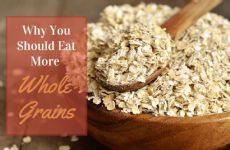|
Low fat. Reduced calorie. Zero trans-fat. All natural. Organic. Is it possible that choosing foods advertising these and other similar health claims can actually increase overeating and lead to unhealthier food choices? Apparently so, according to a growing body of research. The concept of “health halo” has been around for several years now. Basically, the idea is that packaging that makes health claims about food items (or brands, restaurants, etc) often results in people eating more total calories, and more unhealthy foods, than they otherwise might. As you can see from this article, there are several ways that health halos can lead to undesirable effects. One is that people tend to seriously underestimate the number of calories actually in a food item that’s labeled “low-fat” or "reduced calorie." This may lead people to increase the portion size they think is appropriate, or to add additional items to their meal, as when someone orders a grilled chicken sandwich instead of a bacon double cheeseburger, but then adds a large soda and a desert because they assume they can “afford” these extras and still come out ahead on calories. Either way, the research indicates that many people often end up eating up to 50% more total calories when choosing foods with health halos. Another potential problem is that a health-oriented claim like reduced calorie, transfat free, cholesterol free, or organic/ all natural can lead people to select foods, especially snack items, without paying much attention to whether these foods are really a good nutritional deal, or mainly empty calories. The virtuous image created by the health claim seems to somehow short circuit the normal process of evaluating food choices, even for people who are nutritionally knowledgable. How and why health halos end up leading to higher calorie intake and/or poorer nutritional choices isn’t completely clear. Some studies have found that low-fat or other health claims on food packaging, especially for snack foods, reduce the amount of guilt people feel about eating that item and lower inhibitions enough to lead to calorie overload. Or maybe the health halo triggers a lapse into “mindless mode” and we don’t even stop to wonder whether those transfat-free cookies are really what we need. Or maybe we get so obsessed with or confused by the complexities of trying to figure out which foods are “good” and which are “bad” that we set ourselves up for being overly influenced by the claims made on food packaging. In any case, experts suggest that one good way to protect yourself against these effects of the health halo is to get in the habit of automatically challenging any health claim you see on food packaging, menus, etc. For example, you could respond by asking yourself “So what?” whenever you see one of these claims. Then you can stop and check the food label for other nutritional info before you determine whether that food is a good deal for you. Or you could make things even simpler, as Michael Pollan has suggested, and figure that, if the packaging seems to be going for the “health halo effect,” that’s probably a good reason to suspect that what’s inside is really not such a good deal at all. What do you think about this? Do you think you’re sometimes influenced by the health halo effect? Do the advantages of packaging that advertises certain healthier characteristics of a food outweigh the disadvantages? What do you do to minimize the risk of negative consequences? |
More From SparkPeople
|






















.jpg)
